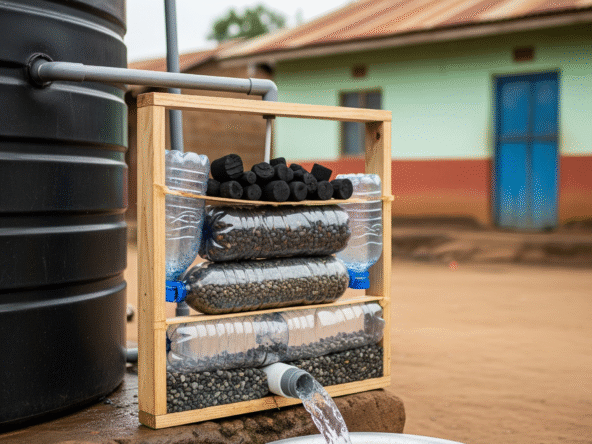As water security becomes a growing concern across Kenya’s urban and peri-urban areas, homeowners are increasingly turning to underground water tanks as a sustainable, space-saving storage solution. Whether you live in a compact residential estate in Syokimau, a sloped plot in Ruai, or a modern build in Kiambu, below-ground tanks help manage fluctuating supply without cluttering your outdoor space.
This guide walks you through the advantages, installation tips, material choices, and cost breakdown of underground tanks suited for Kenyan conditions.
1. Why Choose an Underground Water Tank?
Many plots in Kenya especially in Nairobi satellite towns like Ruiru, Kahawa West, and Kikuyu face space limitations, strict estate by-laws, or challenging landscapes. An underground tank provides a long-term solution by:
- Freeing up yard or parking space
- Shielding stored water from sunlight and heat
- Allowing for gravity-fed plumbing from ground-level tanks
- Maintaining aesthetics in modern or gated developments
- Increasing property value with integrated water systems
Pairing underground storage with a multi-tank linking system ensures uninterrupted supply across dry and wet seasons.
2. Best Use Cases for Underground Tanks
| Scenario | Ideal Tank Type | Recommended Add-ons |
|---|---|---|
| Rainwater harvesting | Concrete or plastic | First-flush filter, leaf guard |
| Borehole water storage | Plastic or GRP tank | Float switch automation |
| Large-family water supply | Concrete or GRP tank | Pressure pump and filter system |
| Garden/landscape irrigation | Any buried tank | Hose tap, overflow drain |
| Water delivery-based plots | Poly tanks (buried) | Tank refill float switches |
Learn how to capture runoff efficiently in Rainwater Harvesting in Kenya.
3. Underground Tank Materials: Pros and Cons
a) Concrete Water Tanks
- Built on-site or pre-cast
- High durability and customizable size (e.g. 10,000–30,000L)
- Excellent for deep burial and high-pressure soils
- Requires skilled masons and waterproofing
b) Plastic (Polyethylene) Tanks for Burial
- Use ribbed or reinforced underground-rated models
- Quick to install, less expensive
- Needs stable backfilling and protection from soil pressure
c) GRP (Glass Reinforced Plastic) Tanks
- Lightweight, non-corrosive, ideal for acidic soils
- Easy to clean and maintain
- Common in high-end residential or commercial projects
d) Steel Tanks (Galvanized or Coated)
- Less common for residential use
- Needs anti-rust coating and secure casing
Not sure which brand suits your home? Compare options in Top Water Tank Brands in Kenya.
4. Underground Tank Installation Tips
Before Excavation:
- Conduct a soil stability and water table test
- Confirm tank weight support and drainage slope
- Choose a location with access for pipework, overflow, and cleaning
During Installation:
- Prepare a concrete base slab to stabilize the tank
- For plastic tanks, use sand or pea gravel backfill to cushion the sides
- Add a sealed manhole cover for inspections and cleaning access
- Install an overflow pipe that leads to a soak pit or stormwater drain
(refer to Soak Pit Design Guide)
Optional Upgrades:
- Integrate a float switch to automate pump refills (Guide here)
- Add leaf guards and gutter mesh to prevent clogging during rain harvesting
5. What Does It Cost to Build an Underground Tank in Kenya?
| Tank Size | Material | Estimated Turnkey Cost (KSh) |
|---|---|---|
| 5,000 litres | Plastic (buried) | 75,000–110,000 |
| 10,000 litres | Concrete | 180,000–250,000 |
| 20,000 litres | Concrete | 300,000–400,000 |
Factors affecting cost include:
- Soil type and excavation depth
- Material availability and brand
- Pump system or plumbing additions
- Whether the tank is integrated into the home’s foundation or compound
To compare more tank prices and features, see Top Water Tank Brands in Kenya.
6. Maintenance and Longevity Tips
Underground tanks may be hidden—but they still require attention. Best practices include:
- Clean the tank at least once a year (How-to Guide)
- Install leaf screens and sediment filters at rainwater inlets
- Add a vented but sealed inspection manhole to keep out pests
- Use a UV-stabilized or opaque access cover to reduce algae risk
- If pumping, use automated float switches to avoid dry runs and overflow (see article)
Underground water tanks offer the perfect blend of space efficiency, aesthetics, and water security for modern Kenyan homeowners. Though the initial cost may be higher than plastic tanks placed on the ground, the long-term convenience, protection, and value make it a worthwhile investment especially in high-density towns or new gated communities.
Combine it with gravity-fed tank setups, solar-powered pumps, and smart refill systems to create a self-sufficient, sustainable water system for your home.
Explore More Practical Water Storage Ideas:


